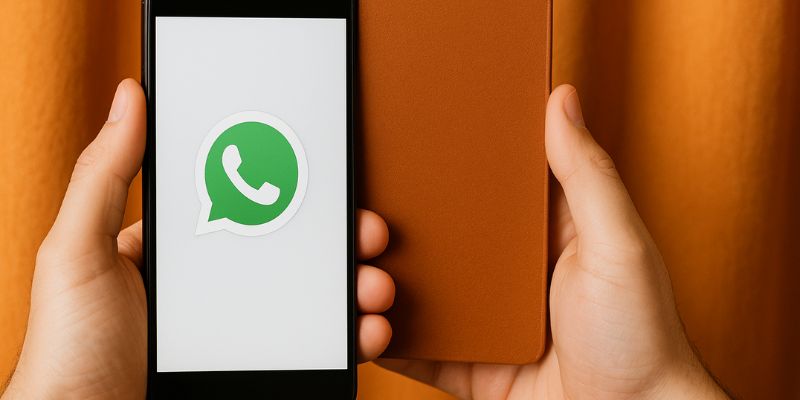How to Maintain Your Privacy on WhatsApp
In today’s digital age, maintaining privacy on messaging platforms like WhatsApp is paramount. With over two billion users, WhatsApp is one of the most popular messaging apps worldwide, making it a prime target for privacy breaches. This comprehensive guide will provide you with detailed strategies to safeguard your privacy on WhatsApp, ensuring that your conversations remain secure and confidential.
Why is Privacy Important on WhatsApp?
Privacy on WhatsApp is crucial because it protects your personal and sensitive information from unauthorized access. Without adequate privacy measures, your conversations, personal details, and media can be exposed to hackers or even misused by third parties. Furthermore, maintaining privacy ensures that your communication remains confidential, fostering trust and security in your interactions.
How to Secure Your WhatsApp Account
- Enable Two-Step Verification: Two-step verification adds an extra layer of security to your account. To enable it, go to Settings > Account > Two-step verification and follow the instructions. This feature requires you to input a six-digit PIN when registering your phone number with WhatsApp, ensuring that even if someone gains access to your phone, they cannot access your account without the PIN.
- Use Strong Passwords: Although WhatsApp does not require a password for login, using a strong password for your phone’s lock screen can prevent unauthorized access. Ensure that your password is a combination of letters, numbers, and symbols to enhance security.
- Keep Your App Updated: Regularly updating WhatsApp ensures that you have the latest security features and patches. Updates often include fixes for vulnerabilities, making it harder for attackers to exploit your app.
Managing Privacy Settings on WhatsApp
- Profile Picture Privacy: You can control who sees your profile picture by going to Settings > Account > Privacy > Profile photo. Here, you can choose to make your profile picture visible to everyone, only your contacts, or nobody.
- Status Privacy: Similar to profile pictures, you can decide who sees your status updates by navigating to Settings > Account > Privacy > Status. You can share your status with all your contacts, exclude specific contacts, or share it with selected contacts only.
- Last Seen and Online Status: Your last seen and online status can reveal more about your activities than you might realize. To manage this, visit Settings > Account > Privacy > Last seen and choose who can see this information.
Controlling Group Privacy
Group chats can be a potential privacy risk if not managed properly. By altering your group privacy settings, you can control who can add you to groups. Go to Settings > Account > Privacy > Groups and select whether everyone, your contacts, or specific contacts can add you to groups.
Understanding End-to-End Encryption
WhatsApp uses end-to-end encryption to ensure that only you and the person you’re communicating with can read what’s sent. This encryption means that messages are secure and cannot be intercepted. However, it’s important to verify encryption by checking the encryption code with your contacts. This can be done by tapping on the contact’s name in the chat and selecting Encryption to compare codes.
Additional Tips for Maintaining Privacy
- Be Cautious with Links and Attachments: Be wary of clicking on suspicious links or downloading attachments from unknown sources, as these can be used to install malware on your device.
- Log Out of Web Sessions: If you use WhatsApp Web, remember to log out after your session. This can be done by going to WhatsApp Web on your phone and selecting Log out from all devices.
- Avoid Sharing Sensitive Information: Be mindful of the information you share on WhatsApp. Avoid sending sensitive data such as passwords, credit card details, or personal identifiers through the app.
Conclusion
Privacy on WhatsApp is an ongoing process that requires vigilance and regular updates to your security settings. By following the strategies outlined in this guide, you can significantly enhance your privacy on WhatsApp and protect your personal information from potential threats. Remember, staying informed and proactive is key to maintaining digital privacy.
FAQ
Is WhatsApp safe to use?
WhatsApp is generally safe due to its end-to-end encryption, but users should remain vigilant about privacy settings and potential threats.
How often should I update my privacy settings?
Regularly review and update your privacy settings, especially after app updates, to ensure optimal security.
Can someone hack my WhatsApp account?
While no system is entirely secure, enabling two-step verification and using strong passwords can significantly reduce the risk of hacking.
What should I do if I receive a suspicious link?
Avoid clicking on suspicious links and report them to WhatsApp. Always verify the source before interacting with any links or attachments.
How can I verify the encryption with my contacts?
You can verify encryption by comparing the security codes with your contacts, found in the Encryption section of your chat settings.
Can I hide my online status on WhatsApp?
Yes, you can manage your online status visibility through the Last seen settings in your privacy options.
How do I prevent being added to unwanted groups?
Adjust your group privacy settings to control who can add you to groups, limiting it to your contacts or specific individuals.
What is two-step verification, and why is it important?
Two-step verification adds an additional layer of security by requiring a PIN for account access, protecting your account from unauthorized use.
